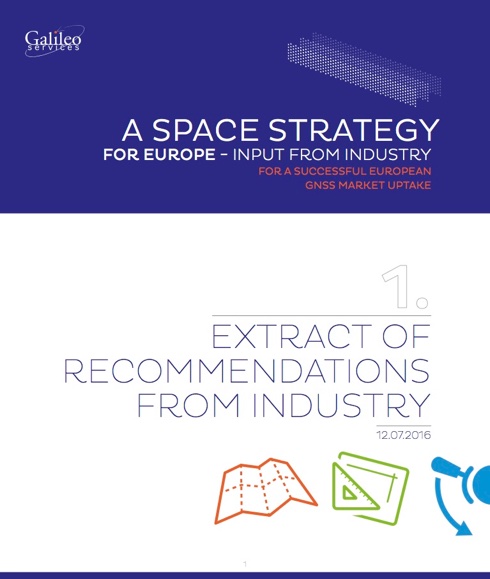The Navigator 13 – Error management
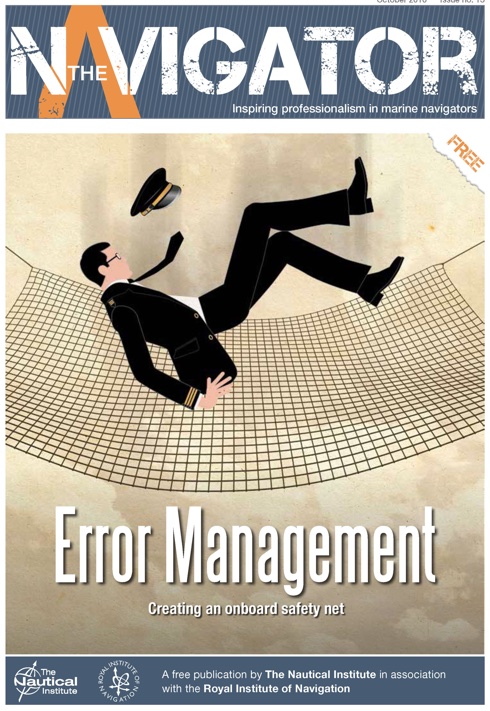
As is well known on board ship the smallest mistake can have catastrophic effects.
The latest issue of The Nautical Institute’s magazine The Navigator aims to teach its readers how to identify, avoid and capture errors. Articles discuss how technology can affect error management and the importance of teamwork and proactive and reactive techniques.
The Navigator is produced by The Nautical Institute with support from the
Royal Institute of Navigation. It is available free in printed format or as a pdf,
digital magazine or app on The Nautical Institute website. A supporting blog can
be found at here.
Stamps of approval for Irish Lights
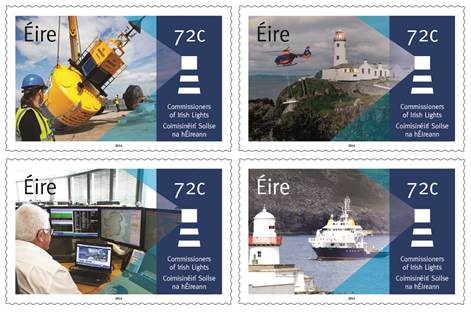
On 6 October the Irish Post Office, An Post, reported that it has issued four new stamps honouring the Commissioners of Irish Lights.
The new 72c stamps, a special first day cover envelope and booklet feature Irish Lights staff working on a buoy; a helicopter near Fanad Head Lighthouse; Irish Lights technology and the Irish Lights Vessel Granuaile. Designed by Dublin’s Vermillion Design, they may be viewed and purchased at all main post offices and online.
As well as maintaining more than 60 lighthouses around the island of Ireland, Irish Lights also provides and maintains specialist aids to navigation using advanced technology, protects the environment and supports the marine industry and coastal communities.
TransNav 2017 – a reminder
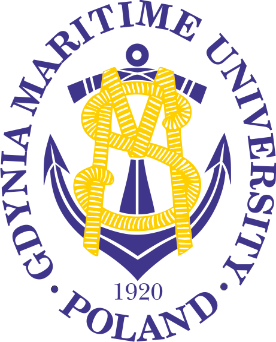
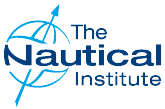
A REMINDER: The closing date for receipt of abstracts is 15 October 2016.
The TransNav Organizational Committee has announced that the next in the series of international conferences on marine navigation and safety of sea transport – TransNav 2017, will be held from 21 to 23 June 2017 in Gdynia, Poland.
This Conference jointly organized since 2007 with the Nautical Institute is addressed to scientists and professionals in order to share their expert knowledge, experience and research results concerning all aspects of navigation, safety of navigation and sea transport.
Hurrican Matthew arrives
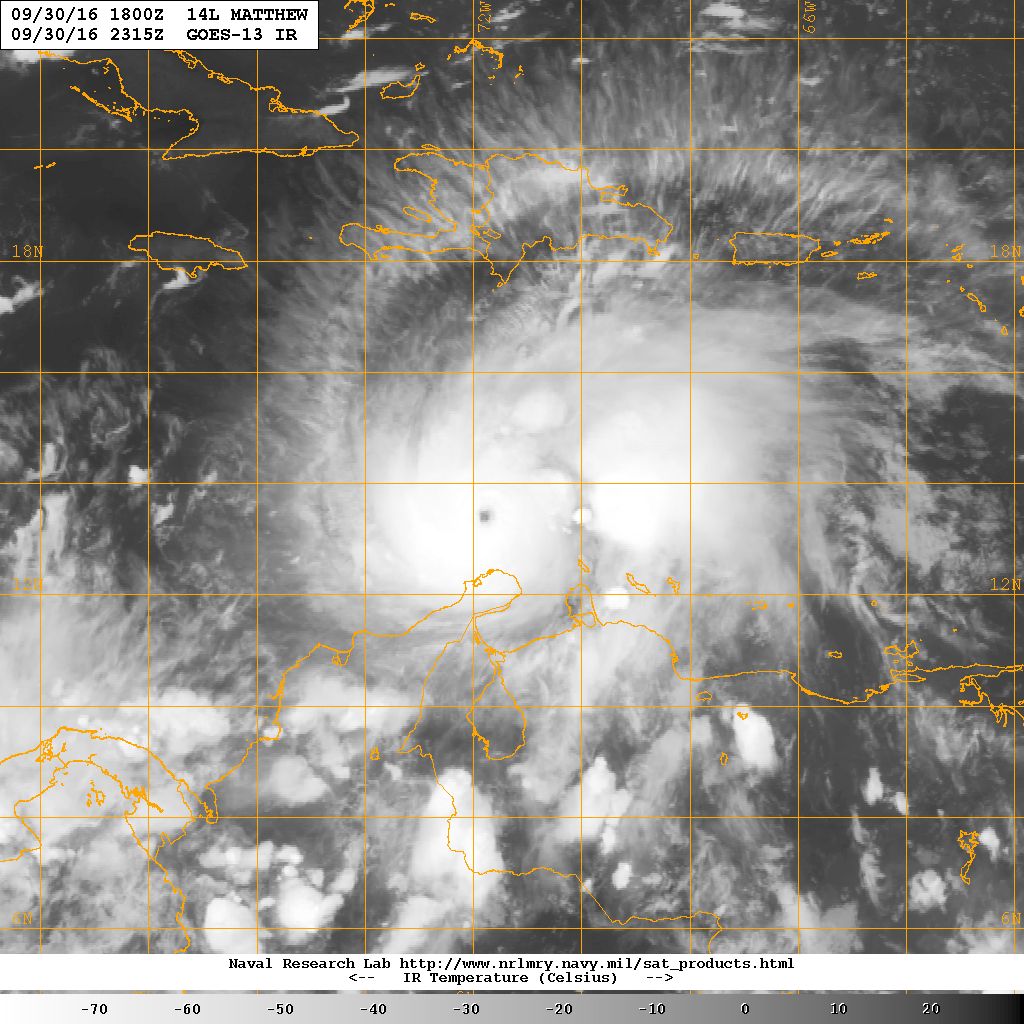
On 30 September the US Navy (USN) released a GOES-13 satellite image from the Navy Research Laboratory Monterey Marine Meteorology division of Hurricane Matthew in the Caribbean Sea at 1935 Eastern Time (ET).
The storm has a well-defined eye and was located near latitude 13.5° North, longitude 72.0° West.
Data from a USAir Force Hurricane Hunter aircraft indicate that maximum sustained winds had increased to near 150 mph (240 km/h) with higher gusts.
USN reported on 2 October that Matthew is a Category 4 hurricane on the Saffir-Simpson Hurricane Wind Scale.
Some fluctuations in intensity were anticipated over the weekend 1-2 October, with Matthew was expected to remain a powerful hurricane through 2 October.
OMC Int. signs strategic alliance with MetOcean Solutions
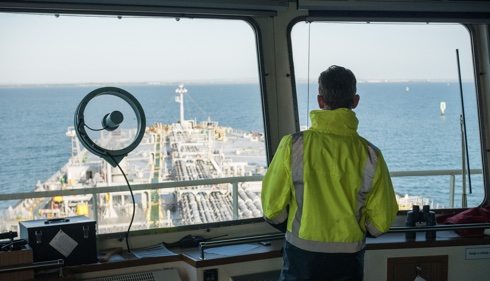
Melbourne firm OMC International has signed a strategic alliance agreement with New Zealand-based MetOcean Solutions to coordinate R&D efforts and offer an expanded level of maritime forecasting and hydrodynamic services to port and harbour clients.
Combined, OMC International and MetOcean Solutions employ more than 80 staff, including engineers, naval architects, scientists and software developers. In addition, the alliance will receive support from MetraWeather, the international brand of the Meteorological Service of New Zealand.
Maritime engineering firm OMC International, founded in 1987 by Executive Director Dr Terry O’Brien AM, is the recognised world-leader in real-time UKC management technology. OMC’s innovative maritime technology, which enjoys an unblemished 23 year safety record, continues to win international accolades, including the prestigious IBJ ‘Safety in Bulk Handling’ (Marine) Award in 2015.
Improving ship operational design
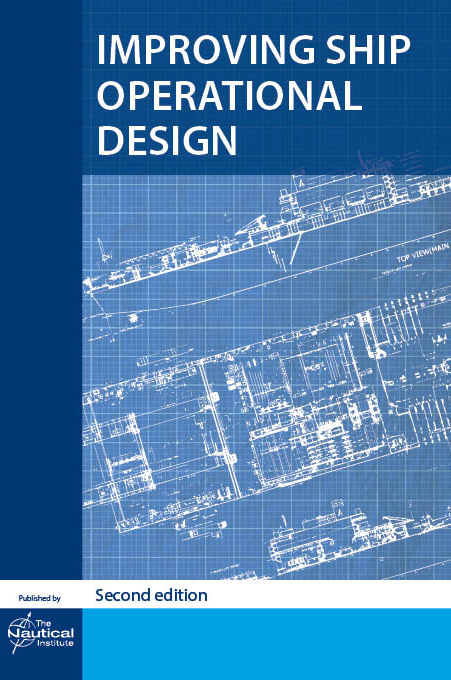
Bad ship design can make life onboard difficult and uncomfortable, cause accidents and even kill. Naval architects have a huge responsibility, but few of them have direct experience of how their designs affect those who use them. Improving Ship Operational Design, published towards the end of September by The Nautical Institute, aims to make maritime operations safer and more effective by giving ship designers an insight into how those onboard work and live. The book was launched at a recent Royal Institution of Naval Architects’ (RINA) conference, where naval architects and others involved in ship design discussed the issue of human factors in ship design and operation.
Improving Ship Operational Design, 2nd ed. is available from The Nautical Institute. Price: £50; ISBN: 978 1 906915 28 5; may be ordered here.
World Maritime Day 2016

‘As the World Maritime Day theme for 2016 so rightly acknowledges, shipping is indispensable to the world – and is set to remain central to world economic growth as we make the inevitable transition towards an era of clean and sustainable development,‘ said IMO Secretary-General Kitack Lim in his annual World Maritime Day Message on 29 September.
Shipping is indispensable to the world. That is the message being shared around the world on 29 September as IMO and the global maritime community celebrated the annual World Maritime Day.
World Maritime Day is an official United Nations day. Every year, it provides an opportunity to focus attention on the importance of shipping and other maritime activities and to emphasize a particular aspect of IMO’s work.
ABS Chairman on cyber protection
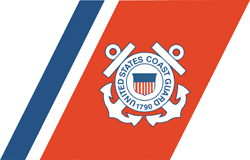
Expressing pride in the long, shared history between the US Coast Guard (USCG) and ABS, Wiernicki recognized USCG leadership in cybersecurity as a regulatory agency and described how cybersecurity has been expanded to a holistic safety approach at ABS.
‘In surveying our clients, ABS confirmed that cyber as a safety issue is among their top concerns,’ Wiernicki said. ‘That prompted our expansion of the ABS CyberSafety™ program, which is the industry’s first risk-based management program with actionable best practice approaches to four key cyber areas, including cybersecurity, automated systems safety, data integrity and software verification. With this extensive program we are defining the absolute value of safety.’
FAA dedicates new Tucson control tower
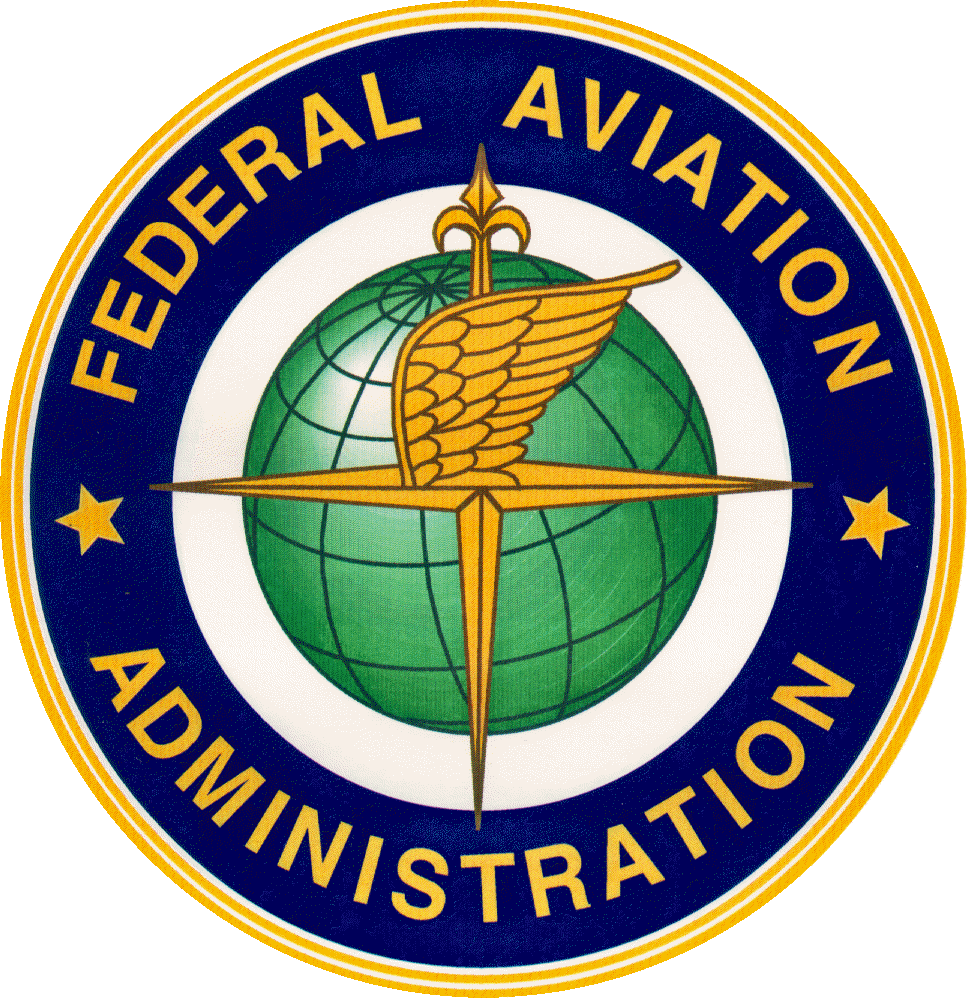
On 23 September the (US) Federal Aviation Administration announced from Tucson that FAA Administrator Michael Huerta had that day joined federal and local officials in dedicating the new, environmentally friendly, air traffic control tower at Tucson International Airport.
The new tower is 252 feet (76.9 metres) tall – about double the height of the old tower, which served the airport for 58 years. It provides air traffic controllers with better airfield views and makes it easier for them to determine the positions of aircraft on the ground and in the skies around the airport.
The project came in under budget and ahead of schedule.
Submitting abstracts for ITM/PTTI 2017

We have been informed that the deadline for submitting abstracts for the ION International Technical Meeting (ITM) and Precise Time and Time Interval Systems and Applications Meeting (PTTI) is Monday, 3 October 2016.
Invitations have been received for immediate abstracts for the co-located ION ITM/PTTI 2017 conference to be held 30 January – 2 February 2017 at the
Hyatt Regency Monterey, Monterey, California.
NTSB 2015 statistics show general aviation accidents decline

According to the latest aviation accident statistics released from Washington on 22 September by the National Transportation Safety Board (NTSB), Part 91 general aviation accidents and fatalities continued their downward trend in 2015. And, just as in 2014, there were no fatalities for US airlines.
General aviation comprises mostly smaller, private-use aircraft. While general aviation flight hours were up in 2015, the total number of accidents were down, from 1,223 in 2014 to 1,209, as was the rate of accidents per 100,000 flight
hours.
Australian Aerial Applcation safety review 2015-2016
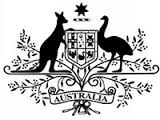
In mid-September the Australian Transport Safety Bureau (ATSB) issued its aerial application safety 2015-2016 year review. This document found that wirestrike was the most common cause of accident and serious incidents in aerial application between May 2015 and April 2016.
Wirestrikes (where an aircraft hits a wire such as a powerline) caused eleven accidents and serious incidents in the twelve month period. Other types of accidents and serious incidents were engine failure or malfunction (six), collision with terrain (three), controlled flight into terrain (two) and runway excursion (two).
UK defence innovation initiative
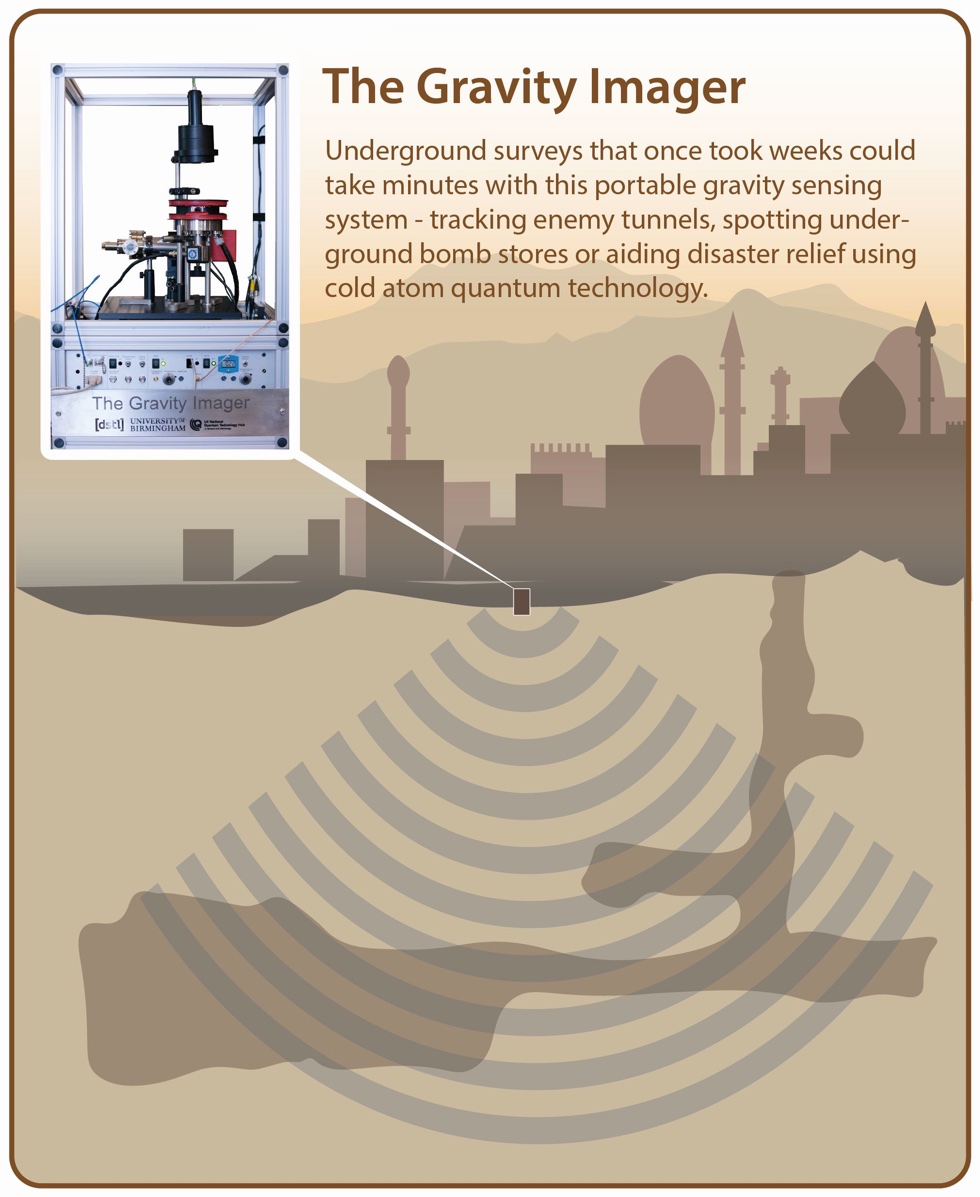
On 16 September UK Defence Secretary Michael Fallon announced that the Ministry of Defence (MOD) is finalising a £30 million deal for a new laser demonstrator which could the transform weapons technology of the future and the development of the UK’s first laser weapon. This is just one of the examples of ground-breaking technology that the UK MOD will support with its new £800 million Innovation Fund.
Life-saving vital signs monitors, advanced anti-missile systems, tiny insect inspired surveillance drones, quantum gravitational detectors, protective materials, and airborne threat-targeting laser weapons are some of the other examples of technology which the UK government’s drive for innovation will support from pitch to procurement.
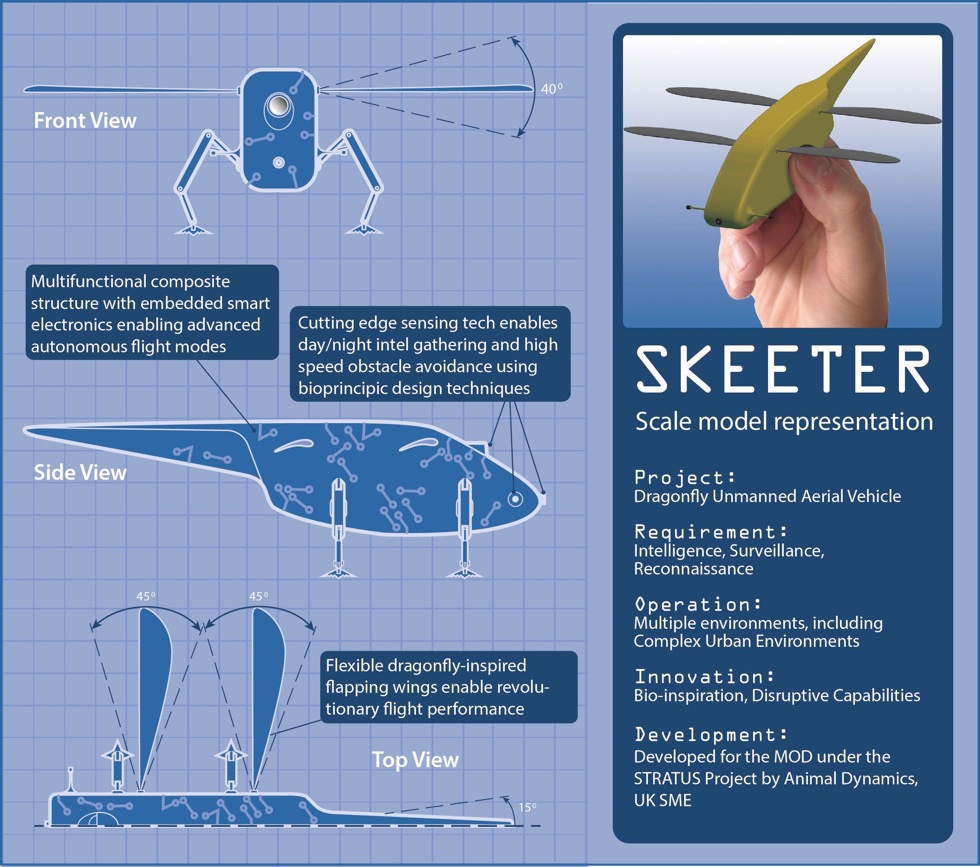
Dr Dorota Grejner-Brzezinska receives the prestigious Johannes Kepler Award

It was reported from ION HQ in Manassas, Virginia, on 20 September that the (US) Institute of Navigation’s (ION) Satellite Division had presented Dr Dorota Grejner-Brzezinska (illustrated) with its Johannes Kepler Award.
Presentation took place four days earlier at the ION GNSS+ Conference held in Portland, Oregon). This award is for her outstanding contributions in advancing high-accuracy GNSS/INS integrated systems, educating future navigation leaders, and for strengthening the ties between satellite navigation and geodesy.
Since the early 1990s, Dr Grejner-Brzezinska has demonstrated sustained and significant contributions in advancing research in applications of GPS/GNSS and multi-sensor integrated systems. The widely known accumulated expertise in her field involved numerous graduate students, post-doctoral researchers and many national and international collaborators.
Emergency training for air traffic controllers

The (US) National Transportation Safety Board (NTSB) provided at end August information to urge the Federal Aviation Administration (FAA) to take action on safety recommendations. These recommendations address emergency identification and response training for air traffic controllers and are derived from NTSB investigations of five accidents.
As a result of these investigations, the NTSB has issued two safety recommendations.
NTSB study assesses USCG VTS system

A safety study released on 13 September by the NTSB details 14 conclusions and 21 recommendations aimed at further reducing the risk of collisions, allisions, and groundings involving vessels operating within US Coast Guard Vessel Traffic Service areas.
The study, An Assessment of the Effectiveness of the U.S. Coast Guard Vessel Traffic Service System (NTSB/SS-16/01), abstract here, focused on the performance of the Coast Guard’s VTS system, currently comprised of 12 VTS centres. The need for the study was driven by the investigation of six major commercial vessel accidents since the Coast Guard’s 2009 implementation of its Vessel Traffic Service National Standard Operating Procedures Manual.
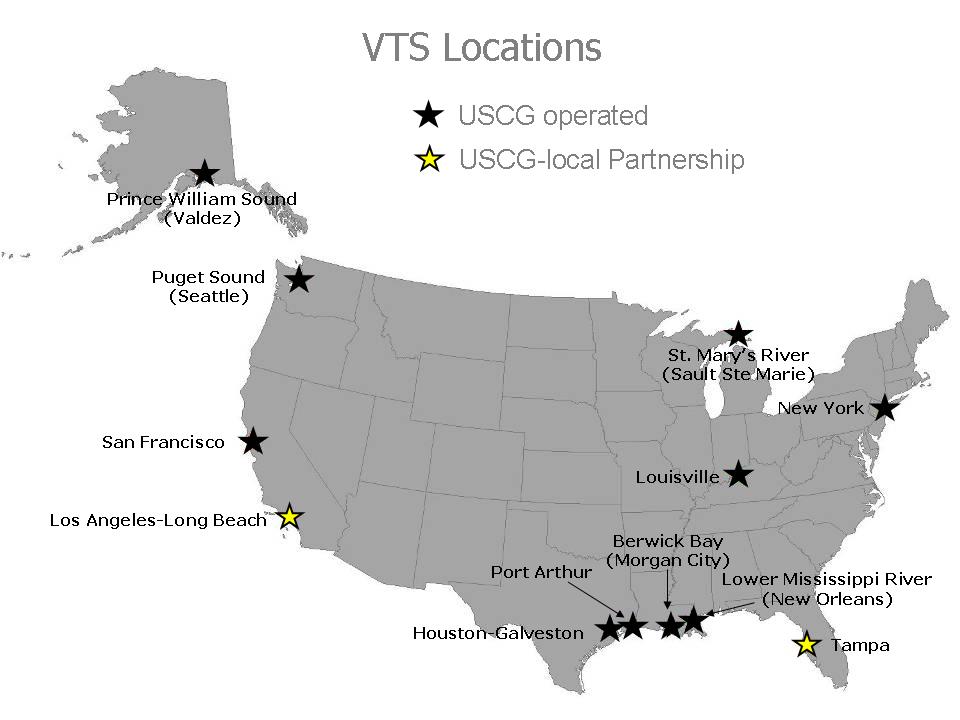
IFALPA runway overrun awareness and alerting system (ROAAS)

On 8 September IFALPA announced that it supports the development and installation of a Runway Overrun Awareness and Alerting System (ROAAS) in all commercial transport aircraft as a means to reduce the number of longitudinal runway excursions on landing. IFALPA’s announcement is in the form of this document outlining CONSIDERATIONS.
Vietnam Airlines to take ten more Airbus A350-900
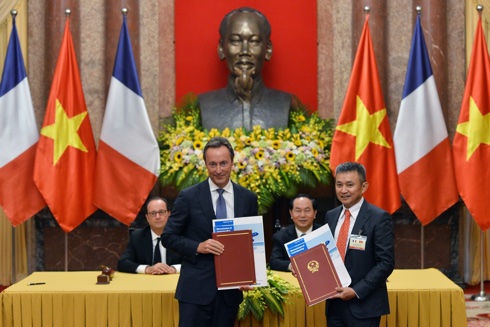
It was announced from Hanoi on 6 September that Vietnam Airlines has signed a Memorandum of Understanding (MOU) with Airbus for ten more A350-900 aircraft.
The MOU was signed in Hanoi that day by Duong Tri Thanh, President and CEO of Vietnam Airlines, and Fabrice Brégier, Airbus President & CEO. The signing took place during the state visit to Vietnam of François Hollande, President of France, and was witnessed by the President and HE Tran Dai Quang, President of the Socialist Republic of Vietnam.
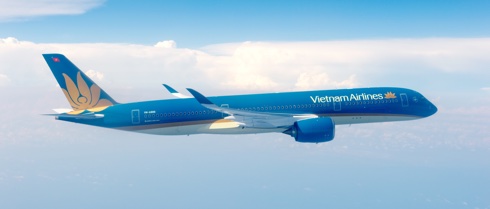
Galileo Services position paper
On 6 September Galileo Services issued a position paper with the title: A Space Strategy for Europe – Input from Industry for a Successful European GNSS Market Uptake.
This document summarises the main recommendations from the European GNSS downstream industry for space strategy. It introduces some examples of essential institutional support in the main GNSS-based application segments. In addition Galileo Services have drawn attention to a recent publication from the government of the People’s Republic of China regarding China’s current plans for the BeiDou Navigation Satellite System (BDS), and in particular, for BeiDou application and industrial development (Part IV), see here.
Galileo Services’ position paper reinforces the urgency to have similar strategies at European level for it is essential that there is a guarantee of development of the downstream favourable for Europe. There is also be an opportunity for the creation of new industrial activities and jobs opportunities in Europe.
Kelvin Hughes launches new commercial ship radar
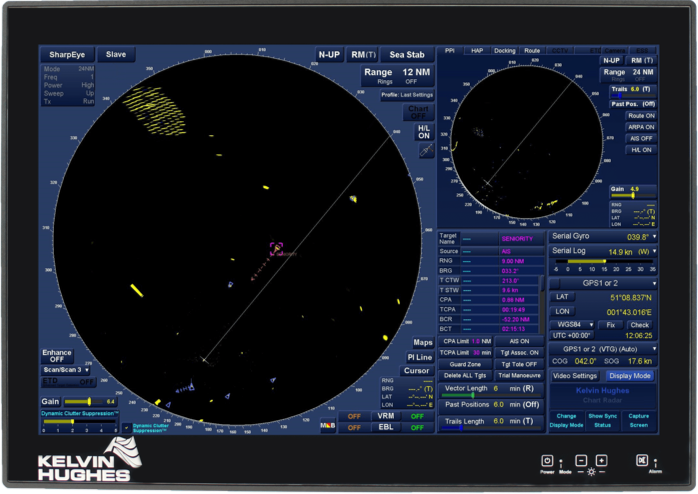
Designer and supplier of navigation and security surveillance systems, Kelvin Hughes, announced on 2 September the launch of a new range of radar systems for commercial shipping based on its innovative, solid-state SharpEye™ technology.
Its SharpEye™, with Doppler processing of the radar returns, has taken situational awareness to a new level with its ability to detect more targets, at longer ranges, than conventional, magnetron-based radar systems, it is understood. Kelvin Hughes reports that its SharpEye™ can detect targets with a low Radar Cross Section (RCS), typically 0.5m2, without any picture degradation even in adverse weather.
The new radar range for commercial shipping includes SharpEye™ S-band radar technology that meets the challenges of safety of navigation and collision avoidance at sea through a clever combination of radar techniques designed to provide the best performance in all conditions.
US NTSB 2015 marine accidents’ review
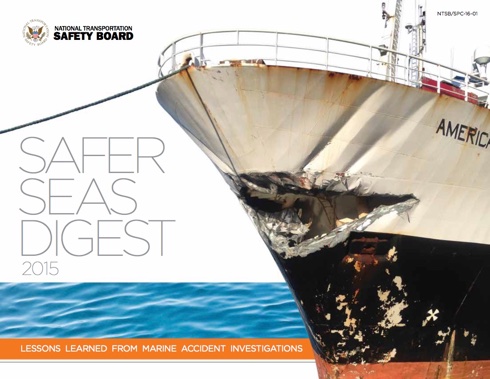
On 16 August the Washington DC-based National Transportation Safety Board (NTSB) released its annual compendium of marine accidents and the lessons learned from them. Known as Safer Seas Digest 2015 the document is available in print and on the NTSB website, to be found here. It examines 29 major marine casualty investigations the agency closed in 2015.
Appointment of Director, the Royal Institute of Navigation, London

The Royal Institute of Navigation is a Learned Society and a UK Registered Charity, operating under Royal Charter. It is also a long-standing member of IAIN.
Now the Institute wishes to replace the current Director on his retirement from 1 January 2017. The initial appointment shall be for five years (and subject to renewal thereafter), over which time the successful applicant will be required to deliver a balanced budget.
The Director is effectively the CEO, responsible for day-to-day management of the affairs of the Institute, subject to the general direction and control of the all non-executive Council; the incumbent also holds the office of Company Secretary of the Institute.
This full-time post is based in London SW7 and involves leading a team of five staff who meet the needs of around 2,200 members. The Director is also required to represent and to speak on behalf of the Institute, acting as first point of contact with media, as well as act as Chairman of the Editorial Advisory Board for The Journal of Navigation, and Managing Editor of the in-house magazine Navigation News.
Further details on the post are to be found here.
Applications are to arrive at RIN no later than 9 September 2016.
MoA signed between IALA and India
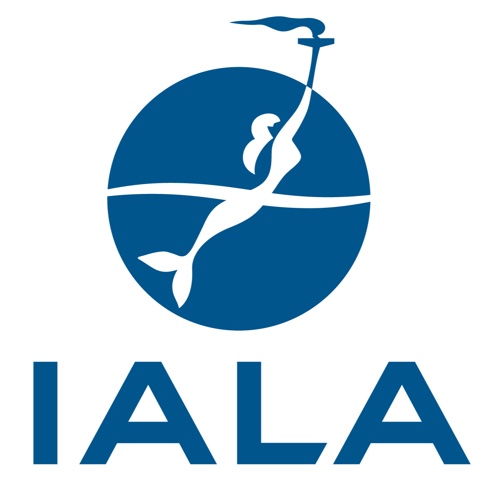
The Indian Government Press Information Bureau has advised that on 11 August a Memorandum of Agreement (MoA) was signed between the International Association of Marine Aids to Navigation and Lighthouse Authorities (IALA) and the Indian DGLL (Directorate General of Lighthouses & Lightships).
The document was signed in Kuala Lumpur, Malaysia and will enable the DGLL Training Centre at Kolkata to deliver a professional training course on the management of marine aids to navigation in line with IALA model courses.
Directorate General of Lighthouses & Lightships (DGLL) is primarily responsible for providing an aids to navigation service for the safety of mariners in Indian waters.
iSea R&D
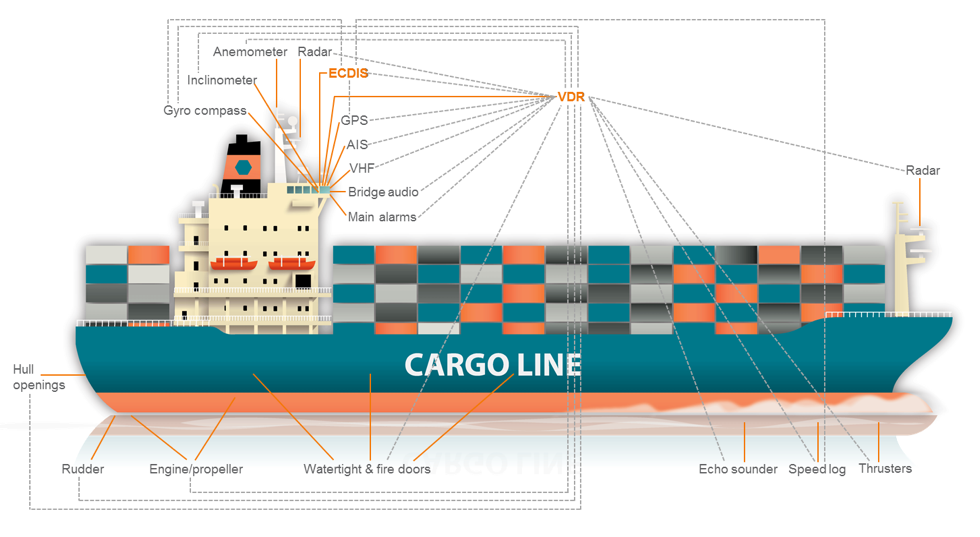
It was announced from Birkeroed, Denmark early in August that Danelec Marine is the project leader for a consortium of companies in iSea, a two-year R&D project to improve efficiency in ship operations and safer navigation.
The iSea programme has been approved for funding by the Eurostars programme. In addition to Danelec Marine, participants are Vessel Performance Solutions ApS (Denmark), i-Marine Technologies and Research Inc. (Turkey) and Deniztekno Danismanlik Bilgi Teknolojileri ve Bilgisayar San. Tic. Std. Sti
(Turkey).
The iSea team will deliver a set of Expert Decision Support Systems (EDSS) for enhancing the performance and navigability of vessels. It is understood that the novel EDSS will be enabled by a low-cost and low-risk telematics solution providing real-time transfer of crucial data from ship to shore. The illustration here shows the various sources of ship-to-shore information needed by owners.
Self-driving vehicles and the GPS systems that guide them
The (US) Institute of Navigation announced on 29 August that its Urban Navigation Panel will take place on14 September at 1345 during ION GNSS+ 16 to be held from 12-16 September in Portland, Oregon will include engineers from Google, Uber and Baidu.
Furthermore, ION announced that engineers from Broadcom, u-blox and the University of Texas will join in headlining the Urban Navigation Panel at Oregon Convention Center, Portland.
This elite collection of speakers are at the forefront of creating self-driving vehicles and the GPS systems that guide them and will present an overview of the techniques and technologies that enable vehicle navigation within cities, where buildings block the signals from GNSS satellites.

